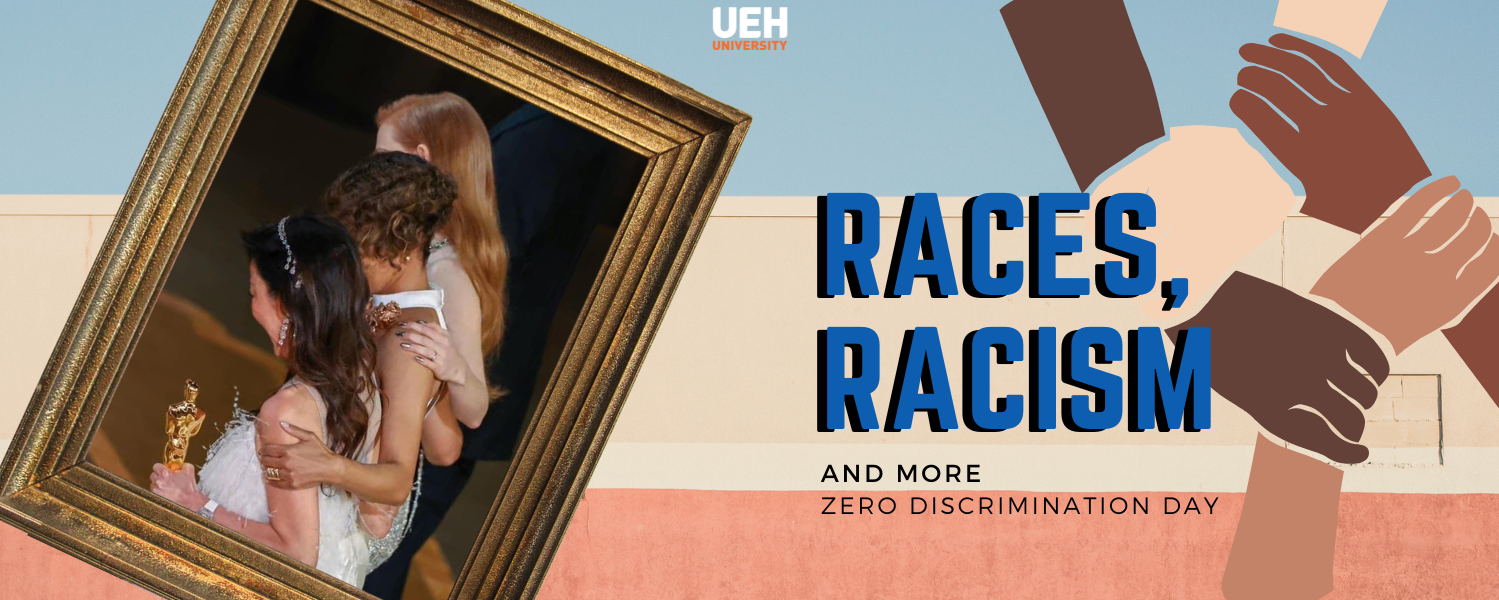
Races, Racism And More
31 Mar, 2023
So for at least a century, much research in the social, medical and healthcare fields has been conducted on defining, abolishing, differentiating, or uniting all races worldwide. There have been heated debates on whether race is a biological reality or a social construct and whether we should continue studying race-associated differences in health and illness behavior or advocate the abolition of medical and public health research using race. It’s an enormous topic to dive into, but today, we want to walk you through the generalization of some terms, discussion, and the actions we should take as human beings.
So What is Race Really?
According to Cambridge Dictionary, race is defined as any social group into which humans can be divided according to perceived similarities in their physical characteristics. Specifically, the NIH (National Human Genome Research Institute) defines race as “ a social construct used to group people. Race was constructed as a hierarchal human-grouping system, generating racial classifications to identify, distinguish and marginalize some groups across nations, regions and the world. Race divides people into groups often based on physical appearance, social factors, and cultural backgrounds.”
Considering the definition, we know that race was initially created to tell groups of people apart to, in a way, state the existing privilege that some “upper” groups have over others. Nowadays, we often point out races of people similarly by looking at some visible physical traits, such as skin colour, hair texture, facial features, and eye formation. Such distinctive features are associated with large, geographically separated populations, and these continental aggregates are also designated as races, such as the “African race,” the “European race,” and the “Asian race.” We would like the modern way of defining race of Professor Audrey Smedley “Race is a culturally structured systematic definition of a way of looking at perceiving and interpreting reality.”
Is it possible that racism comes from fear?
Britannica defined racism as “the belief that humans can be divided into separate and exclusive biological entities called “races"; that there is a causal link between inherited physical traits and traits of personality, intellect, morality, and other cultural and behavioral features; and that some races are innately superior to others.” As one can see, the word “race” has already somehow contained the meaning of racism, obviously because the word “race” itself was created for the purpose.
After World War I of Germany’s defeat, the anti-Semitism (discrimination against Jews as a religion or racial group) was intensely exploited by the Nazis, who took over the country in 1933 and implemented policies of systematic discrimination, persecution, and disastrous mass murder of Jewish people in Germany and in the territories occupied by the country during World War II (find out about the Holocaust).
While in North America, the apartheid era started dictating that different races (mainly blacks and whites) should be segregated. Those who held belief in racism claimed that two races should have their own distinct communities and develop their own institutions such as churches, schools, and hospitals and strictly stay in their own races’ area. It is unnatural and unacceptable for members of different races to get married. There is not much to say if was not for the corky belief that members of low-status races should be limited to low-status jobs and that members of the dominant race should have exclusive access to political power, economic resources, high-status jobs, and unrestricted civil rights.
The idea of racism, especially in the 18th century, was invented to magnify the differences between people of European origin and those of African descent whose ancestors had been involuntarily enslaved and transported to the Americas. By the 19th century, racism had matured and spread around the world. In many countries, leaders began to think of the ethnic components of their societies.
Let’s discover another term called “Xenophobia” (Zee-no-foe-bee-uh) - an aversion or hostility to, disdain for, or fear of foreigners, people from different cultures or fear or dislike of the customs, dress, etc., of people who are culturally different - according to Dictionary.com. The word was selected as Word of the Year by Dictionary.com in 2016 following the number of searches for the word rocketed by 93% after Brexit.
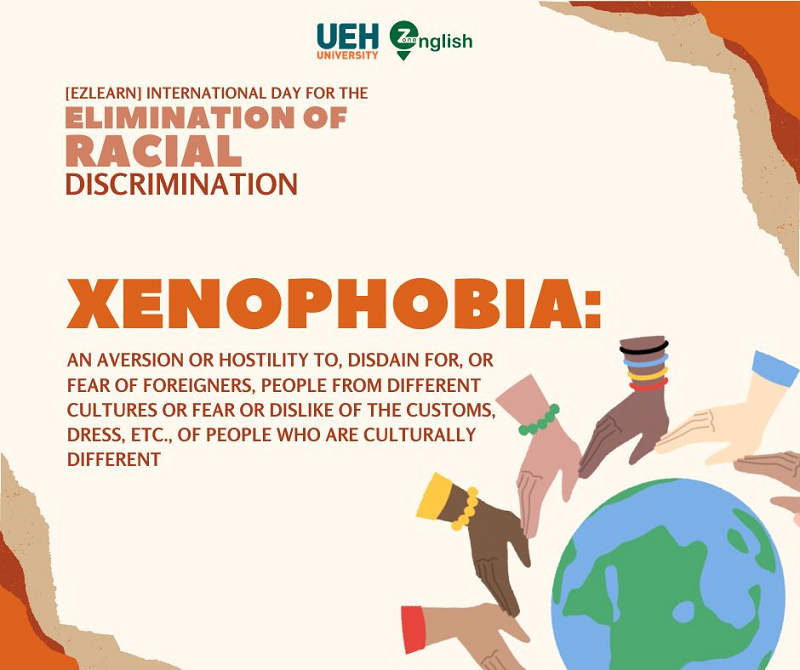
Xenophobia was constructed by 2 phrases stemming from Greek: Xénos: strangers and Phóbos: fear. Although sounds like a disorder, xenophobia is not considered a medical diagnosis like agoraphobia or thalassophobia. Those anxiety disorders cause symptoms that can significantly interfere with a person’s life and are medically treatable. Whereas “xenophobia” refers to aggressiveness, fear, and hostile beliefs. It comes from a person’s ideology and worldview rather than a disorder. People who hold xenophobic views can show hatred towards immigrants, refugees, religious minorities and people from different cultures.
It can be parted into two broad types of xenophobia:
- Immigrant xenophobia: dislike or fear of people from different nationalities or religions.
- Cultural xenophobia: dislike or hostility toward different cultures. Assuming that products, foods, or movies from other cultures are inferior to one’s own is an example of this.
Xenophobia can be attributed to people motivated to fulfill their own sake of power, insecurity, greed, other prejudices and other forms of oppression. Some factors can contribute to less explicit xenophobia, such as lack of diversity, education, and innate fear of strangers.
The differences between xenophobia and racism
It is apparent that racism and xenophobia have significant overlap, but they are not the same thing. Xenophobia specifically relates to a person or group having “outsider” status within a society. Racism specifically relates to race or ethnicity, whether the person or group has “outsider” status or not. These two forms of prejudice can occur separately, or together. For example, a citizen feeling resentful toward immigrants solely due to a belief they are stealing local jobs, is an example of xenophobia on its own. Whilst it amounts to both xenophobia and racism when the same citizen show hatred toward all immigrants owing to preconceived notions about their ethnicity, skin tone, and their impact on the local economy.
The most recent event relating to xenophobia is the aggressive disgust and fear against Asians that happened in the U.S. due to Covid-19. There’s been many assaults reported, a mass shooting in Georgia, Atlanta,... Rooting from fear, it has grown into prejudice and then actions that cost actual lives.
However, whether it is Xenophobia or Racism, we should acknowledge that they are both widespread forms of prejudice and discrimination that negatively impacts the lives of many people globally and jeopardize the relationship among us human beings.
TAKE ACTION
On an individual level, we can challenge racism or xenophobia via:
- Education: Take time to learn about diversity, races, and xenophobia. Equipped yourself with knowledge and information from trusted sources to debunk myths and stereotypes.
- Cultural appreciation: first and foremost, love and take pride in your culture, and ethnicity then learn to appreciate, and respect others. Expand your understanding of food, music, and movies of different cultures. Encourage your friends and family to read books, watch content with diverse characters, and introduce foods from various cuisines.
- Inclusivity: Find ways to make group environments more inclusive to blow off the “us versus them” dynamic. For instance, you can invite foreign friends, and friends from other ethnic to hang out after school. Find out more about cultural activities with international students at UEH English Zone.
- Speaking out: speak out against racist, xenophobic comments, jokes, or microaggressions. Spot your friends, and people around you when they say inappropriate things.
In conclusion, whatever races, cultures, and ethnicities we are, we need to ensure that our peers and we feel proud of our own colors under our own skin and we are able to do and achieve anything we put our hearts and minds to.
News, photos: Department of Student Affairs UEH
References
Andreasen, R. O. (2000). Race: Biological Reality or Social Construct? Philosophy of Science.
Johnson, J., & Villines, Z. (2022, August 5). Xenophobia: Meaning, signs, examples, and stopping it. Medical News Today. Retrieved March 7, 2023, from https://www.medicalnewstoday.com/articles/xenophobia#types
Smedley, A. (2023, February 15). Racism | Definition, History, Laws, & Facts | Britannica. Encyclopedia Britannica. Retrieved March 7, 2023, from https://www.britannica.com/topic/racism
Takezawa, Y. I., Smedley, A., & Wade, P. (2004). Race - The history of the idea of race. Encyclopedia Britannica. Retrieved March 6, 2023, from https://www.britannica.com/topic/race-human/The-history-of-the-idea-of-race

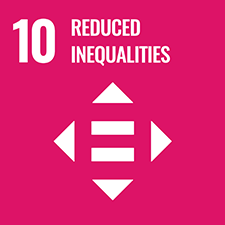


![[Research Contribution] Factors Affecting Gen Z's Intention To Buy Green Cosmetics Through The Intermediate Variable Of Consumers' Attitude](/images/upload/thumbnail/ueh-thumbnail-639018655243295179.png)

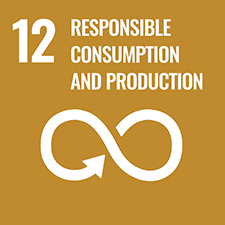
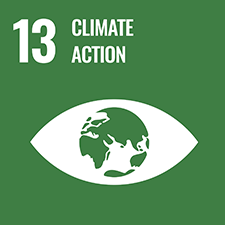





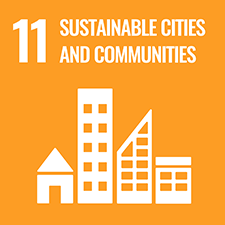

![[Research Contribution] The relationship between green finance and environmental degradation: Empirical evidence from countries participating in the "Belt and Road Initiative"](/images/upload/thumbnail/ueh-thumbnail-639015796322698758.png)
